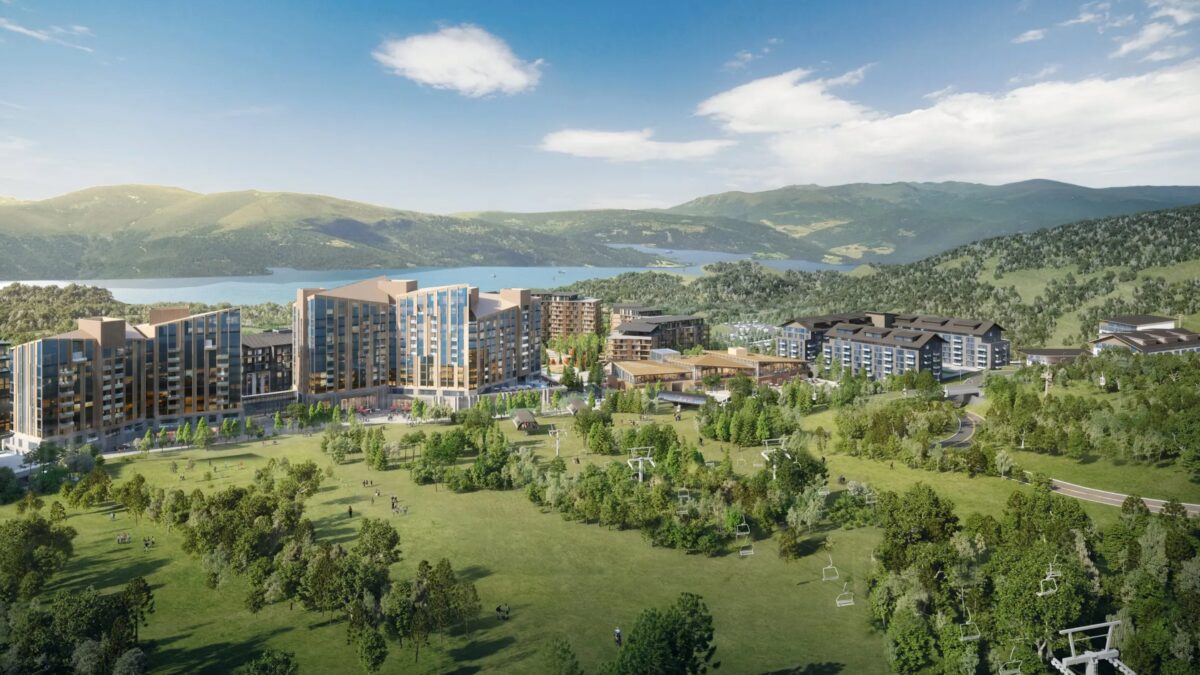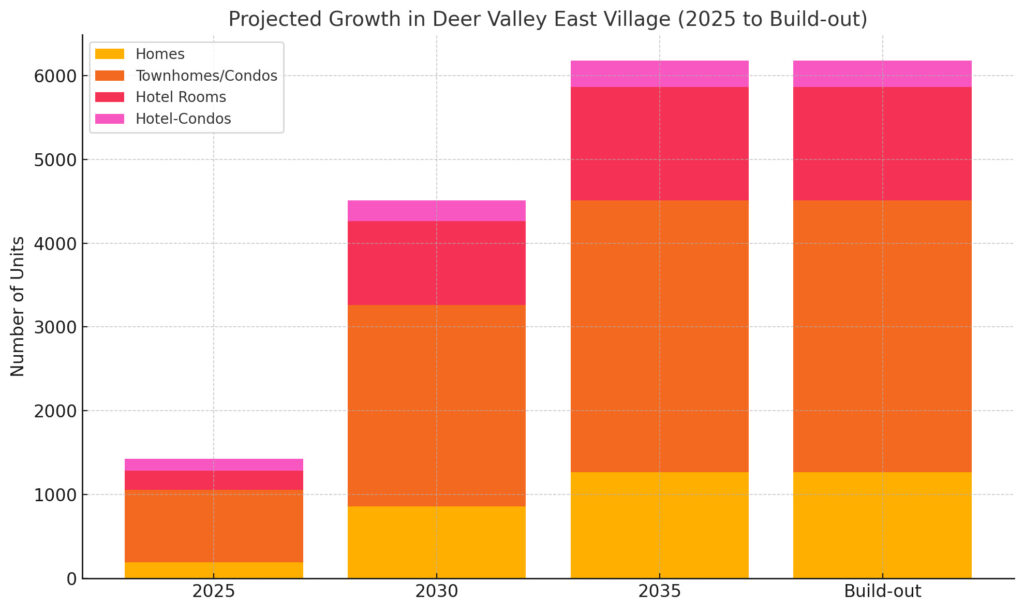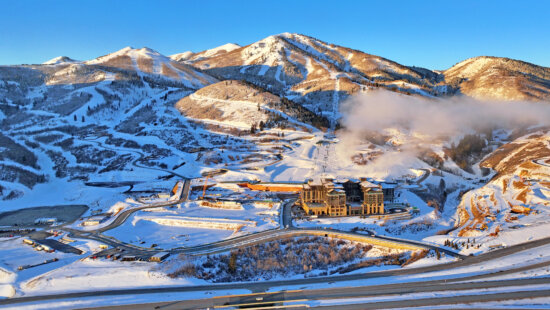Growth
Over 6,000 new residential units will reshape Jordanelle & Deer Valley East Village ahead of 2034 Olympics

A rendering of the future Deer Valley East Village. At full buildout the Deer Valley East Village and Jordanelle area will see an explosion of growth with more than 6,000 residential units. Photo: East Village Summer
WASTCH COUNTY, Utah – A new report from the Military Installation Development Authority (MIDA) reveals just how quickly the Jordanelle area—and particularly Deer Valley East Village (DVEV)—is projected to grow, with Wasatch County officials set to hear the latest development projections during Wednesday’s council meeting.
The report outlines a dramatic transformation over the next decade, with more than 6,000 new residential units and hotel accommodations expected by the time the area reaches full build-out. That includes 1,267 single-family homes, 3,240 townhomes or condos, and nearly 1,700 combined hotel rooms and hotel-condo units, most of them concentrated in DVEV.
Those numbers roughly equate to an average day population of more than 7,500 visitors and residents at peak buildout. That number does not include staff and employees needed to run the hotels and resort infrastructure. During peak seasonal periods that number would surge past 10,000 people per day.
Rapid development ahead
Currently, only about 22% of the projected development has been completed. But that number is expected to more than triple within five years and reaching over 93% completion by 2035. MIDA calls this a “front-loaded window” of development, noting that much of the growth is timed with key events like the 2034 Winter Olympics, where Deer Valley will serve as a host venue.
“This is a critical moment in the life cycle of this community,” the report states. “Transformational changes will take place early in each development window.”

The growth outlined in MIDA’s report means developments at the Jordanelle and the East Village would more than double the most recent data on residential units in Heber City, which reached a total of 5,160 units as of 2022, according to the Kem C. Gardner Policy Institute. Heber City increased its housing stock by 53% between 2013 and 2022,
During that decade, the city built 1,554 single-family homes and about 225 apartments, and Heber City’s population grew by 43%, nearly reaching 17,000 residents in 2022.
Unique growth pattern and pressure points
The report divides Deer Valley East Village into six zones, each with distinct timelines and development character. While hotel developments are primarily clustered in Zones 2 and 6—seen as economic drivers—residential projects will span all zones. Retail and service infrastructure are largely expected to grow around those hotel nodes.
Officials highlight the importance of these projections in planning for long-term municipal needs, including water, transportation, public safety, and education.
“These numbers aren’t just theoretical,” the report notes. “They help Wasatch County and MIDA prepare for the real-world impact of this unprecedented growth.”
A tipping point for the county
MIDA’s analysis suggests the growth in Jordanelle and DVEV is unlike anything else in the region. If major developments like the Marcella Club, Skyridge, and Pioche were removed from consideration, current development levels would drop from 22% to just 11%—illustrating how much the area’s growth hinges on these megaprojects.
This week’s presentation builds on previous MIDA reports and offers a data-backed roadmap as the county approaches significant milestones, including Wasatch County’s 175th anniversary and expanded resort terrain at Deer Valley.
County councilmembers are expected to discuss how this rapid growth will affect infrastructure planning and service delivery in the coming years. The Wasatch County Council meets at 4 p.m. on Wednesday, May 14.




















